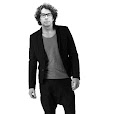

Like most people I waited for this film with great expectation. I have admired Nolan’s films long before the whole Batman deal. Like most movie fanatics I had to see the opening day, which I in fact did. Who can forget the brilliant 2000 film “Memento” with Guy Pierce and the film considered his first; “Following” is also truly amazing. This is not your typical summer movie in classic Nolan’s fashion this is something else. Christopher Nolan’s new movie is an amazing digital apparatus, a virtual reality sci-fi thriller set inside the dreaming mind, with brilliant architectural effects and a weirdly inert narrative inspired by Philip K Dick and Lewis Carroll. At some stage in the distant future, the technology of industrial espionage will allow spies to invade the dreams of CEOs and obtain commercially sensitive information. Leonardo Di Caprio is Cobb, a specialist who both carries out these hi-tech brain raids and trains executives to resist them.
The movie is basically about a Japanese mogul Saito played by Ken Watanabe offers Cobb the challenge of a lifetime: not to steal an idea, but to plant one, incept one. He needs Cobb to insinuate himself into the dreams of a dangerous young business rival: Robert Fischer Jr (Cillian Murphy) and somehow plant in him a determination to break up the family empire that is hurting Saito's profits. Cobb assembles an elite squad of brain-hackers including Ariadne (Ellen Page) and Arthur (Joseph Gordon-Levitt, I think he is the most important indie-actor today). They plan to drug Fischer on a 10-hour plane flight and create a triple-decker dream, a dream-within-a-dream-within-a-dream, which will last 10 years in Fischer's dreaming mind.
Some of the coolest parts are when Cobb and Ariadne go for a stroll in the streets of Paris, which Nolan folds and tweaks and twists, with the avenues rising and falling like a pop-up book. It reminded me of architectural references like MVRDV’s 5minute city project “fold city”. Later, Arthur will fight with goons in a virtual hotel that suddenly swivels around: they plunge down a corridor that has become vertical, like a lift shaft, I couldn’t help thinking of “Blood of a Poet” by Jean Cocteau, the scenes at the non-gravity rooms after going through the mirror. The best moment comes before any of this, when, finding themselves chatting over coffee, Cobb remarks to Ariadne that the essence of a dream is that we only remember the middle, not the beginning. For example, he wonders, how did they reach this cafe? With rising panic, Ariadne realizes she has no idea, and that they are in a dream that Cobb has created. Playfully, brilliantly, Nolan has exploited the cinematic convention of the "cut".
At the end of this complicated plot, he will have arrived at a settled determination to break up his family firm. And he doesn't simply go to the deepest level first and then attain reality up through two successive waking episodes: he goes down, and down, and down. And there's another problem; Cobb is plagued with guilty visions of his late wife, Mal played by Marion Cotillard, invading this synaptic world and threatening to become more real than either Cobb's trickster dreams or his waking life. I wouldn’t go into what really happens at the end because every single person I talked to has a different point of view. I have included the link to a website that attempted to create a diagram interpreting all this.
http://www.firstshowing.net/2010/07/21/inception-aftermath-theories-thoughts-oscar-buzz-more/




